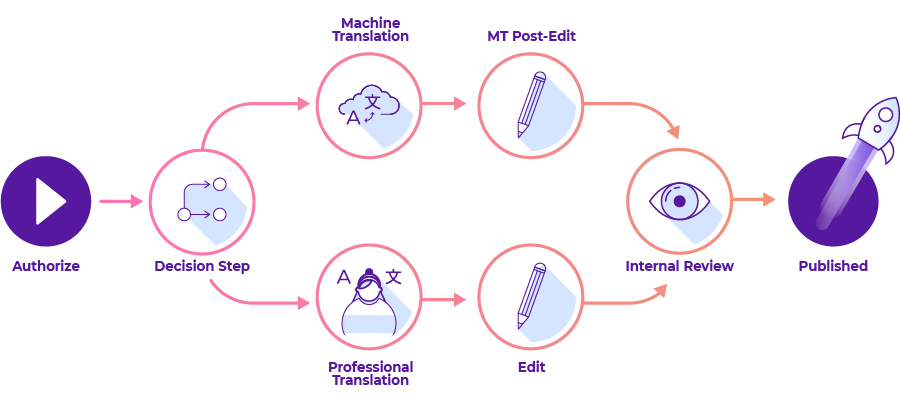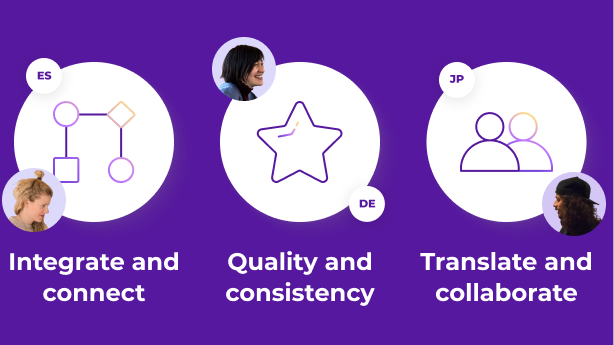Technical translation is a specialized form of translation that involves converting technical content, such as user manuals, from one language to another. It requires a deep understanding of both the source and target languages, as well as technical concepts. This type of translation is crucial for global businesses that need to effectively communicate complex information across linguistic and cultural barriers.
Many people assume that technical translation is simply a matter of replacing words in one language with their equivalents in another. However, it’s important to also consider the cultural and linguistic nuances that can impact your message’s meaning and relevance in other markets. In fact, a study on making culture relevant in technical translation emphasizes the importance of understanding cultural differences in technical translation.
To overcome these challenges, it’s essential to adopt a more nuanced and culturally sensitive approach to technical translation. In this article, we’ll cover strategies you can use for more precise and culturally relevant technical translations.
Types of technical translation
Technical translation encompasses a wide range of specialized content and requires a high level of subject matter expertise in relevant technical terminology and writing conventions.
Below are some common types of documents that require technical translation:
- User guides: These guides provide instructions for installing, using, and troubleshooting technical products, such as software, hardware, electronics, and equipment.
- Maintenance manuals: Manuals provide information on machinery, equipment, system functions, and maintenance to achieve smooth operations and minimize downtime.
- Patents: Patents often contain highly technical and specialized language. The goal of patent translation is to bridge the gap between this specialized terminology and the needs of a general audience, such as potential investors, collaborators, or the public.
- E-learning courses and training material: Technical translation makes educational content accessible in different languages and ensures that all employees and trainees can understand and use the information effectively.
- Application programming interface (API) documentation: Technical translation helps users understand API documentation, which contains technical support material and instructions for usage.
- User research: Technical translation makes sharing research findings across borders and accurately conveying technical terms easier. It also makes these findings accessible to all stakeholders.
- Technical drawings: These drawings require translators and project managers who can handle specialized file formats and incorporate localized labels, measurements, and visual elements.
- Marketing materials: Accurate marketing material translations, such as brochures, product descriptions, and advertisements, effectively communicate your product’s features and benefits to diverse audiences.
- Software strings and apps: Technical translation is an important element in the software and app translation process. This involves translating technical content in software, web, and mobile applications, such as buttons, menus, labels, and other user interface elements.
Check out our detailed guide on different forms of translation to learn more.
The importance of precision and cultural relevance in technical translations
Precision is critical in technical translations because even minor inaccuracies can have serious consequences, such as legal issues, safety risks, and noncompliance with regulations. Technical documents often contain complex terminology and industry-specific jargon, so translators must have deep subject matter expertise to accurately convey the intended meaning.
Here’s an example of why accurate translations are so critical: in 2007, a German translation error in a knee prosthesis package label once resulted in faulty knee replacements for 47 people. Because the manufacturer incorrectly translated the product label from ”non-modular cemented" to "non-cemented,” surgeons didn’t think they needed to use cement for the surgery. As a result, 30 of these patients underwent a second surgery to correct the issue.
Cultural relevance is also essential for technical translations. Technical documents may contain references or concepts that are deeply rooted in the source culture, which may make them inaccessible to outside audiences. Because of this, translators must adapt content to other cultures and languages so it resonates with target audiences. This process includes differences in legal systems, units of measurement, and user interface preferences.
An example of poor cultural adaptation is when Amazon's Swedish retail site launch made headlines for incorrect translations. Among other glaring errors, the retail site labeled a collection of World War II–era Russian infantry figurines as “Russian toddlers.” These mistakes highlight the significance of culturally aware translations.
Professional translation services, on the other hand, achieve precise and culturally relevant technical translations. Some ways that they can improve translation accuracy and quality include:
- Facilitating clear and effective communication across languages and borders
- Ensuring compliance with regulations to avoid legal issues
- Supporting global business expansion by enabling companies to connect with international audiences
- Enhancing user experience by providing culturally appropriate technical content
Strategies for ensuring technical translation accuracy
Technical knowledge alone is insufficient for achieving precise translations. Accurate technical translations require a much more nuanced approach.
Here are some strategies you can implement to ensure technical translation accuracy:
1. Balance technical jargon with audience understanding
If you’re an expert in a technical field and often use technical jargon, it’s easy to lose sight of users’ experience and understanding. Technical documents also often have specialized formatting, layouts, and embedded content like images and graphics, which add a layer of complexity.
It’s crucial to strike a balance between technical accuracy and audience comprehension. This means using clear and concise language and avoiding overly technical terms. Additionally, relying on native speakers for content translation helps you connect with local audiences and provides readers with a clearer understanding of complex concepts.
2. Work with native-speaking translation experts
Partnering with native-speaking translators is essential for high-quality technical translations. Native speakers have an in-depth understanding of the target language and its nuances, which allows them to accurately convey complex technical information. Make sure to choose translators who have technical expertise and a proven success record in your industry. For example, Smartling works with an extensive network of carefully vetted, 100% native-speaking translators who leverage local expertise to deliver high-quality translations. These translators have an intimate understanding of the culture and people they are communicating with.
3. Implement automated quality assurance at every stage
Automated quality assurance can significantly improve technical translation accuracy. Translation management systems (TMSs) like Smartling’s come with built-in quality assurance processes to identify and flag potential errors, ensuring that the final product meets required standards. Additionally, a TMS can also automate workflows, detect new content, and trigger translation processes to maintain consistency and accuracy.  Smartling’s translation process incorporates quality assurance at every stage. (Source)
Smartling’s translation process incorporates quality assurance at every stage. (Source)
To learn more about achieving high-quality translations, read our guide on automated quality assurance.
4. Create a glossary and use translation memory
A glossary is a shared database of approved terms. This repository helps your translators ensure that they use specialized terminology consistently throughout all translations.
Translation memory also plays a crucial role in terminology management by storing previously translated segments of text and industry-specific terminology that translators can reuse in future translations. This tool also ensures consistent language usage across multiple translation projects.
Learn more about creating a useful glossary for translators.
5. Deploy an efficient translation management process
Translation is typically a time-consuming process that involves collaborating with multiple stakeholders, such as subject matter experts, technical writers, translators, and editors. TMSs can streamline this process by providing you with a single view of all your translation projects and automated workflows so you can more easily manage your translated content, quality checks, and editing processes.  Manage multilingual content at scale with a TMS. (Source)
Manage multilingual content at scale with a TMS. (Source)
Case studies: Excellence in technical translation
The right technical translation service will help you affordably scale your global expansion and localization goals.
Here are some stories from companies that have successfully implemented technical translation services:
Yext achieved an 87% decreased edit rate
Yext helps brands provide their customers with accurate information across search engines, voice assistants, maps, and more than 175 global platforms.
As Yext expanded globally, its manual translation process became unsustainable. By partnering with Smartling, the company was able to automate its translations, which reduced its edit rate by 87% and decreased its cost per word by 25%. This significant improvement allowed Yext to focus on scaling its business while maintaining high-quality translations.
Read the full case study to learn more.
AdRoll cut its translating time by over 50%
AdRoll Group, a marketing technology company, used Smartling to reduce its translation time to market from 93 hours to only 35.
The company was able to translate its marketing documents and mobile app and rapidly expand across the globe, thanks to Smartling's expertise. In just two weeks, Smartling also helped AdRoll launch a multilingual website that enabled the company to effectively communicate with customers worldwide.
With Smartling's technology, AdRoll was able to eliminate daily localization and technical translation tasks, freeing up its engineers to focus on other critical projects and saving up to 40% in translation costs.
Learn more about AdRoll’s translation journey.
Smartling's expertise in technical translation
Smartling is a renowned technical translation provider with a strong focus on precision and accuracy. We leverage AI-powered human translation and a team of skilled native-speaking linguists to deliver high-quality translations that cater to various industries’ unique needs.
With Smartling’s seamless integrations with developer tools and code repositories like Optimizely, Contentful, and Sanity, users can efficiently manage their content translation and localization workflows. These integrations help businesses automate their translation processes and provide their global audiences with accurate and scalable technical translations.
But that’s not all—Smartling’s platform provides accurate translations for any kind of material, from technical documentation to marketing materials and customer-facing content. This flexibility allows businesses to leverage Smartling's professional translation capabilities across their entire content portfolio, guaranteeing consistency in all their translated content.
Smartling also offers a robust TMS, which includes features such as real-time status reporting, automated workflows, and advanced quality metrics. These features allow businesses to manage their technical translation projects while balancing costs and efficiency.
This comprehensive support, combined with its scalability and flexibility, makes Smartling the ideal choice for global businesses that prioritize localization at scale but don’t want to compromise on quality and costs.
Make your complex technical translations easy with Smartling—book a meeting today.
%20052925%20-%20AI%20Translation%20101%20(1).png)
.jpg)